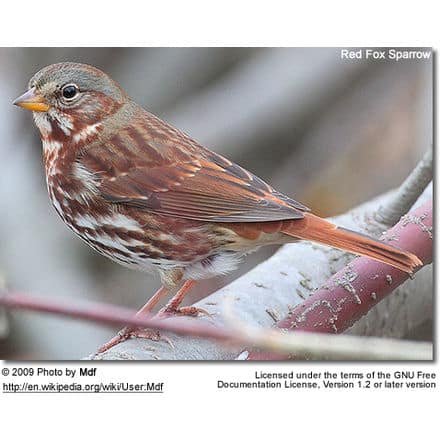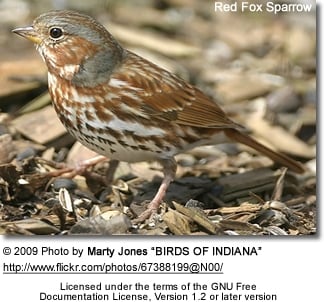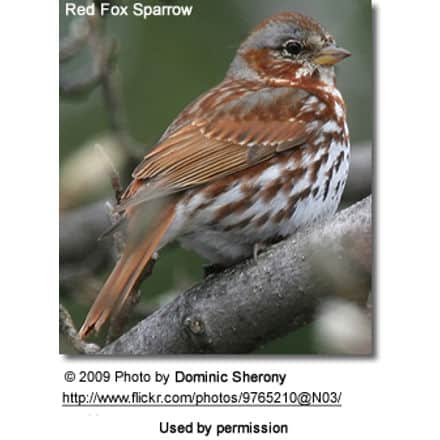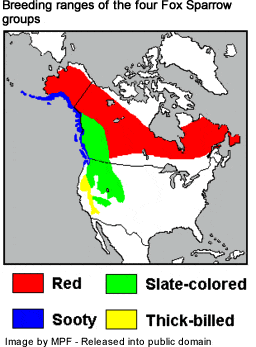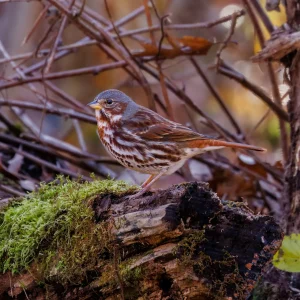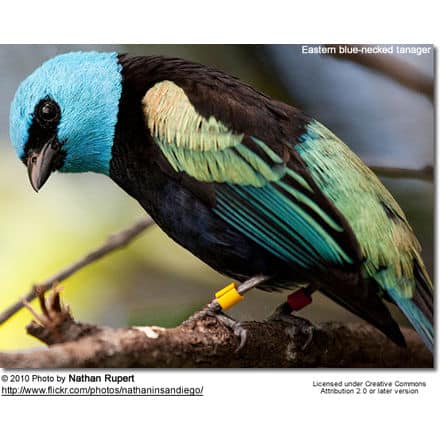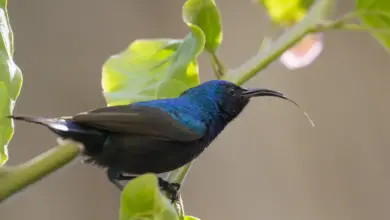Red Fox Sparrows
The Red Fox Sparrows (Passerella Iliaca)
Red Fox Sparrows (Passerella Iliaca) is the collective name for the most brightly colored taxa in the American sparrow genus Passerella, the Passerella iliaca iliaca group.
The fox sparrow (Passerella iliaca) is a large New World sparrow.
The Red Fox Sparrow Taxonomy
Pending wider-spread acceptance of species status, the Red Fox Sparrow is currently classified as a “subspecies group” within Fox Sparrows.
It has long been suspected to be a separate evolutionary lineage due to morphological distinctness, and this is confirmed by analysis of mtDNA sequence and haplotype data.> This group appears to be most closely related to the Slate-colored Fox Sparrows, but it altogether likely to represent the basalmost divergence of the fox sparrow clade.
The Red Fox Sparrow Description
The Red Fox Sparrow is a large sparrow with a length of 15 – 19 centimeters (6-7.5 inches), wingspan of 27 centimeters (10.5 inches) and an average weight of 32 grams (1.1 oz). The head is gray with a rufus crown auriculars or ear coverts (feathers covering the ears). Throat is white with a rufus lateral stripe on each side. The lower bill is yellow while the top transitions from yellow at the bottom to black at the top. The breast has reddish brown streaks with a messy central spot. The streaks continue down the flanks but the belly is generally white. The combination of distinct rufus and gray streaks on the back with a gray rump is diagnostic. Sexes are morphologically similar.
The Red Fox Sparrow Vocalization
Its voice is described as “a loud smack like Brown Thrasher“.
The Red Fox Sparrow Reproduction
Red Fox Sparrows breed in a wide band that stretches though mostly taiga habitat, from Newfoundland to northern Alaska. Their preferred breeding habitats are dense willow and alder thickets as well as spruce and fir bogs.
Red Fox Sparrows may nest on the ground, or in shrubs and trees. They typically nest less than 2 meters off the ground. Clutch consists of 3-5 pale blue to pale green eggs that are thickly spotted with brown. Incubation lasts between 12 to 14 days. The eggs are mostly incubated by the female though both sexes feed the young. Young birds are altricial and fledge in 9 to 11 days.
The Red Fox Sparrow Wintering and Migration
They winter in temperate and subtropical North America; in the northern USA and southern Canada they often only stop over on their migration further south. The spring migration starts around February, and by early May almost all birds have returned to the breeding grounds. In fall, they start to move south around early October, and by mid-November, only the last stragglers still remain up North.
The Red Fox Sparrow Ranges and Geographical Variation
Geographic variation in the iliaca complex is minor compared to individual variation, both in morphology and molecular
data samples. The western Yukon Fox Sparrow (Passerella iliaca zaboria) differs from the nominate subspecies, the Eastern Fox Sparrow (Passerella iliaca iliaca) only in having a grayer head and browner malar (cheek) stripe on average. The morphological distinction between the subspecies is not pronounced and the birds are not resident all year; therefore absolutely certain identification within the Red Fox Sparrow complex is never possible in the field.
However, the populations occupy different ranges, apparently – as far as they can be distinguished – with just a small band of overlap. The contact zone is roughly the area between the Nelson and lower Churchill Rivers, Manitoba, in summer. In winter, the Mississippi River and the US states of Alabama and Georgia mark the approximate boundary between the subspecies’ ranges. P. i. iliaca occurs from S Wisconsin and Ontario east to Massachusetts and then along the coast north to southern Canada; it ranges south to the Gulf of Mexico and N Florida, whereas P. i. zaboria occurs from SE Minnesota to the Great Plains, south to Texas and east to the zone of overlap mentioned above.
Copyright: Wikipedia. This article is licensed under the GNU Free Documentation License. It uses material from Wikipedia.org … Additional information and photos added by Avianweb.
Please Note: The articles or images on this page are the sole property of the authors or photographers. Please contact them directly with respect to any copyright or licensing questions. Thank you.

